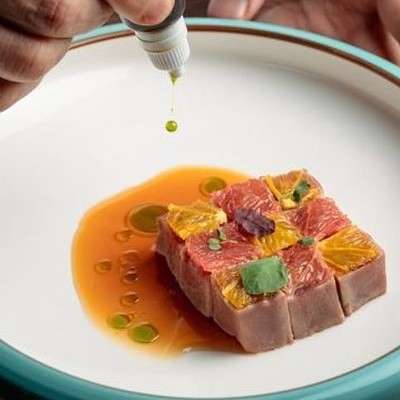Assistant Music Editor Craig Hlavaty recently purchased a 1981 edition of The Genuine Texas Handbook, a guide to all things Texan. It's an often-tongue-in-cheek look at the people, places, outfits, songs, foods and more that made someone Texan 31 years ago. Incidentally, the book and I are the same age, so we'll be featuring excerpts from the handbook's food chapter (entitled, fittingly, "Love & Lard") over the next few weeks to see how Texas has changed during the course of this food writer's lifetime.
Rosemary Kent's book on how to be a Texan contains -- as you would guess -- many nifty how-to lists. Among those in "From Chuck Wagon to Cocina," the food section of the handbook, are lists on how to spot genuine barbecue joints, Tex-Mex restaurants and chicken-fried steak spots.
All of those how-to guides include "fly swatters" on the lists of things to look for in a legit establishment. But that's not all...
According to Kent, these are the necessary items you should find inside of any Tex-Mex joint worth its fajitas:
- One or two serapes draped on chairs
- Paintings on velvet of bullfighters, sequined sombreros, on the walls
- Hot sauce and fresh tortilla chips brought to the table with the menu
- Dishes named "Combination," "Regular," "Fiesta," or for a city or state in Mexico: "Saltillo," for instance
- Mexican beers on the menu
- Inexpensive prices
- Cactus collection
- Pralines wrapped in wax paper at the end of the meal
- Shell no-pest strip
- Red plastic roses and red plaster bulls
- Fly swatter
While it's tough to argue with most of the items on the list (especially the dishes named after a city or state in Mexico), you could definitely argue that these definitive items are among the reasons that most Texans -- and certainly Houstonians -- are so tough-minded in their rigid definitions of what Tex-Mex (and, by our curious logic, Mexican food on the whole) should be now and forever.
The book is 30 years old, and almost all of these items -- sans the no-pest strips and fly swatters, thanks to rampant a/c -- hold true, although you generally have to pay for your pralines at the end of the meal now. We fear change when it comes to our Tex-Mex food.
In fact, the only things I'd add to the list today would be:
- Murals of Aztec scenes or cityscapes from places like Monterrey (if the mural is of Monterrey, it must include at least one soccer stadium)
- Margaritas on the menu
- Sizzling comals of meat and/or shrimp on at least half the occupied tables
- Tiny abuelitas making tortillas (whether visible from the dining room or not)
- Strolling mariachis playing "Guantanamera" for the 12th time that night even though it's a Cuban song
- Bottles of Tapatio and/or Valentina hot sauce on the table
Do these things always have to define a good Tex-Mex restaurant? Absolutely not, nor should you judge a place by how many serapes it has hanging from the walls. But that doesn't mean most of us aren't doing it anyway.
Follow Eating Our Words on Facebook and on Twitter @EatingOurWords





